News & Event
Student activity: night view of Huolu Mountain
The weather is getting cooler slightly, and the air is faintly filled with the smell of autumn deepening. The whole Huolu Mountain is slightly damp, and the moss on the stone slabs is densely growing along the edges. It was dark, the distant debris was slowly fading, and the moonlight was falling down the gaps in the woods. I and the other members of the HFI Nature Observation Society arrived at the meeting point on time with anticipation and nervousness, and although we had some experience in nature observation, it was still a bit challenging to observe at night, after all, a small spider or a small reptile suddenly jumped out of the darkness, and no one could guarantee that they would not scream.
The leading teacher was already waiting for us at the south gate of Huolu Mountain, he came from Guangzhou Nature Observation Society with rich experience, explained a lot of theoretical knowledge and safety matters to us, let us dispel a lot of concerns, and began to enjoy an intimate date with nature at night.
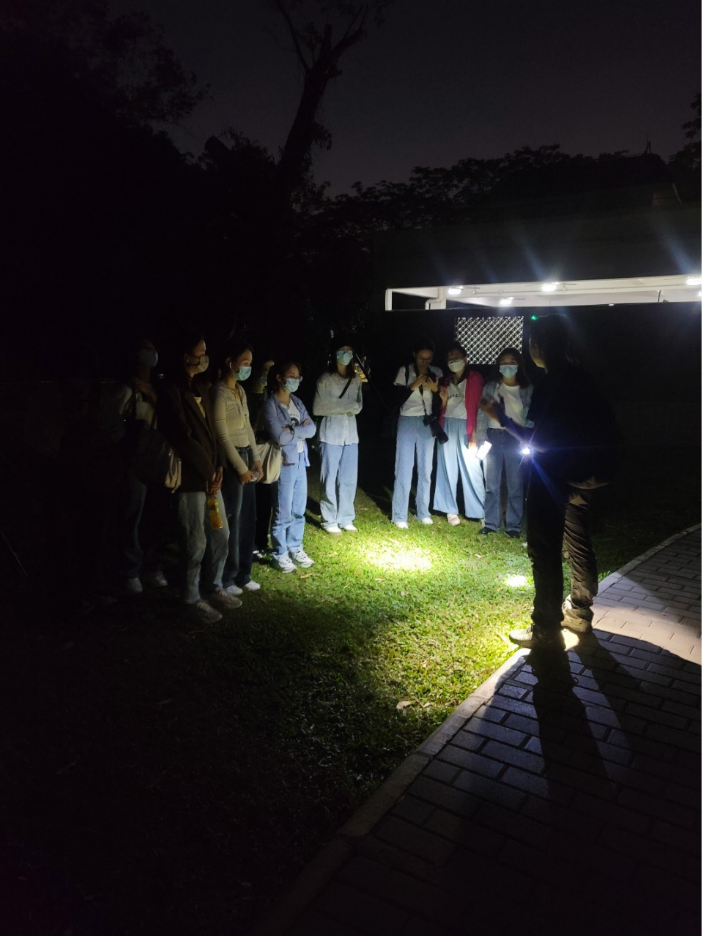
When night falls, the noise of the city suddenly recedes, and the small animals begin to come out for activities. From nature's point of view, night is their stage and arena, because their number one natural predator, birds, mostly fall asleep. Taking advantage of the cover of night, they go out to feed - reptiles, frogs, snakes and moths... Vividly interprets the mystery of natural life in which the weak prey on the strong and the survival of the fittest.
A toad not afraid of snakes
As we all know, snakes are natural enemies of frogs and toads, but Duttaphrynus melanostictus is an exception. It is a nocturnal animal that hides mainly in earthen caves and rock crevices during the day and only goes out in search of food at night. It mainly feeds on insects and occasionally earthworms. It rarely jumps, mostly crawls, looks a little humble, and has little combat effectiveness.
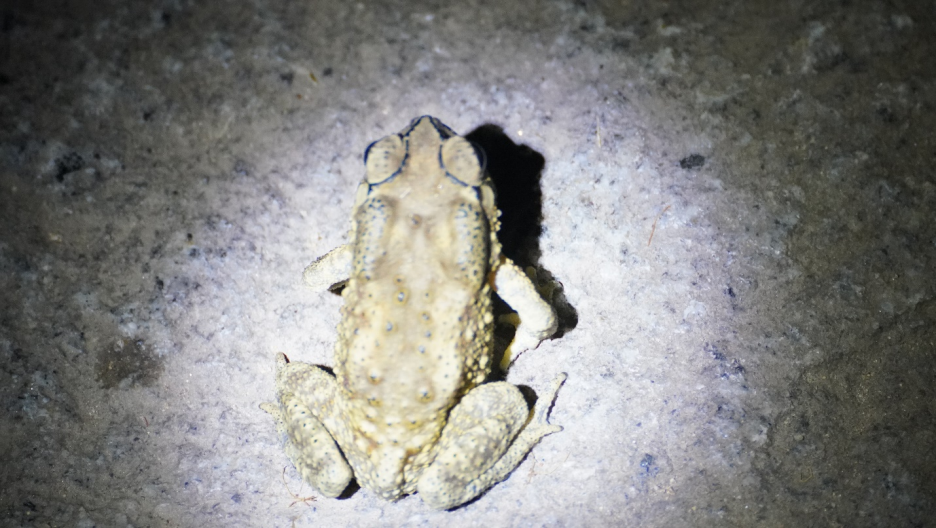
But don't underestimate it, ordinary snakes dare not prey on it, because its skin glands and post-ear glands can secrete milky white venom, except for the red-necked snake and cobra, most other snakes are afraid of it.
In fact, although the venom of Duttaphrynus melanostictus can make snakes afraid, it is a good thing for humans. These venoms can be processed into precious Chinese medicine called toad crisp for detoxification and swelling; In addition, the toad coat made of its naturally shedding keratin film also has medicinal effects; In addition, dried toads made by removing the internal organs are also a kind of Chinese medicine. It can be said that Duttaphrynus melanostictus is a treasure all over the body, and it can destroy field pests and control ant infestation, so you need to protectit more!
A frog that rises into a ball when angry
Kalophrynus interlineatus inhabits grass around homes or cultivated land and rarely moves in water. Likes to hunt insects and spiders in the grass at night, and often several frogs resonate with each other and call loudly. If you immediately stop barking when you shine a flashlight, it will still crouch in place and stand silly, as if waiting for you to catch the posture. But Kalophrynus interlineatus has a lot of temper, and if you pat it with a branch, it will immediately swell up and look like a ball, which is very interesting.
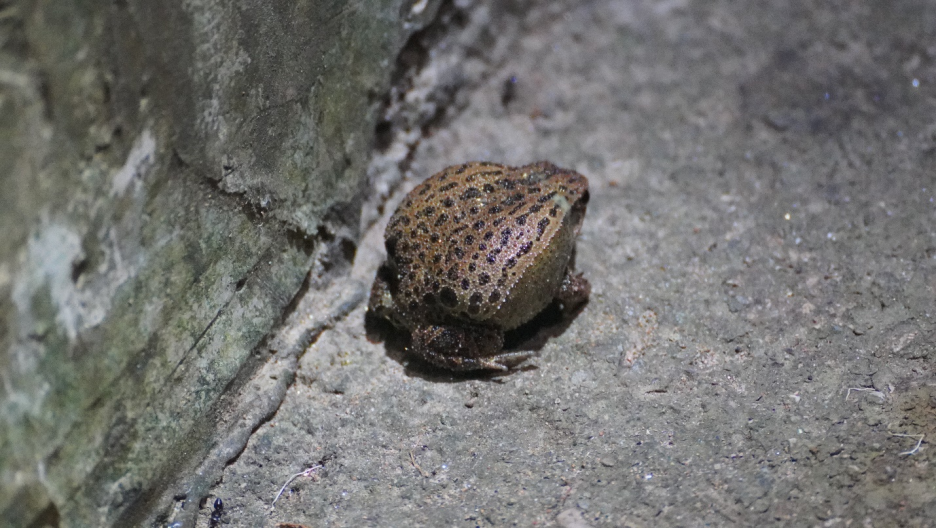
At this time, it is not easy to touch it with your hands, it will secrete venom at the same time, and the toxicity is not weaker than that of toads, and it is peculiarly corrosive. It is said that if snakes mistakenly eat this frog often have broken intestines and terrible deaths. It is also said that this venom is not immune even to itself, and those improperly bred Kalophrynus interlineatus will also become a pool of blood after death, which shows that its toxicity is terrible, so do not provoke it easily.
A frog that pees when caught
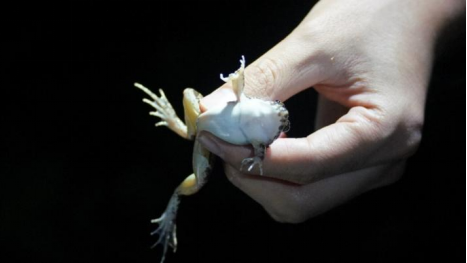
Although Fejervarya Multistriata looks embarrassed after being captured, it will be scared to pee, but it is actually one of the main natural enemies of farmland pests, once known as the "insect catcher" and "crop guard", and has played an important role in the history of human farming. Although the body of Fejervarya multistriata is small, it eats a lot. Each frog can swallow an average of about 50 bugs per day, with a maximum of 266 birds ever recorded. If there are dozens of Fejervarya multistriata per acre of farmland, tens of thousands of farmland pests can be eliminated in a year, which undoubtedly controls pests effectively. Although the state has been vigorously publicizing the role of frogs in controlling pests, due to the large-scale application of chemical pesticides, chemical fertilizers, herbicides and insecticides, the resources of frogs are decreasing day by day, and their survival is greatly threatened. Therefore, many areas have begun to vigorously promote biological control, and frog protection and pest control are the main measures to ensure agricultural yields.
Half-slugs that spit bubbles
Yes, you read that right, this is not a snail, but a half-slug, a relative of a snail. Snails, half-slugs, and slugs can be said to be the three brothers of gastropods, who look very similar. If you have to distinguish them, you may only be judged by whether there is a house (shell) or the quality of the house. And the half-slug is the kind of middle class who has a house, but the house is relatively simple, less than the upper (snail) and more than the lower (slug).
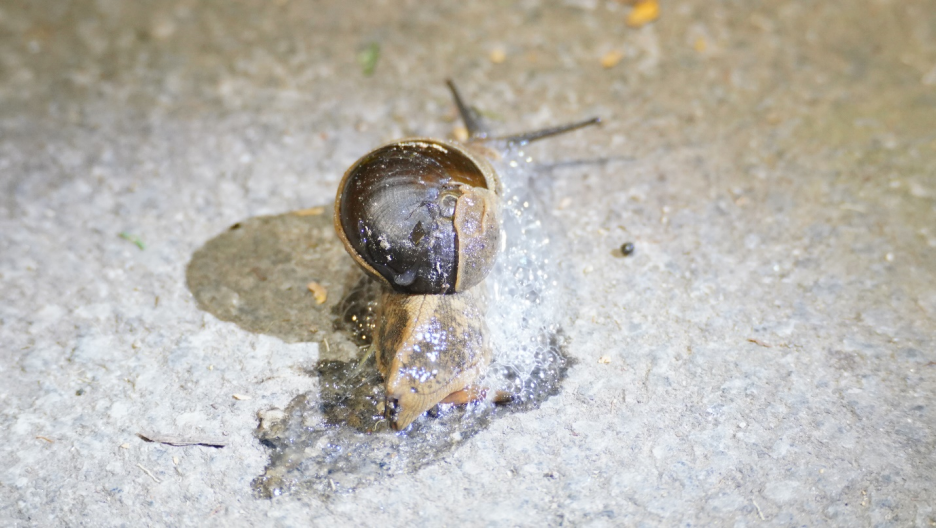
Interestingly, most animals in nature are left-right symmetrical structures, and some are radially symmetrical, in short, they are all symmetrical. However, because gastropod animals often have a spiral-shaped shell on their backs, causing their internal organs to grow spirally in the shell, make them become one of the very few completely asymmetrical animals, which is actually a miracle of nature, but it is often ignored by us.
Tsunade's psychic beast slug
Most of the gastropods mentioned above belong to a very small number of animals that are completely asymmetrical, but don't you see slugs symmetrical? Interestingly, although the slug is symmetrical in appearance, its internal organs are still coiled. Although the appearance has evolved, the inside has not had time to evolve, isn't it more interesting? So the slug is more special, it can be said that it is a miracle of miracles,
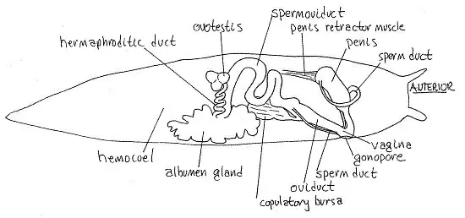
It has a place in the culture of many countries, especially Japanese culture. The most famous is "Naruto", where Tsunade's psychic beast is a white and fat slug. In Japanese culture, snakes, frogs, and slugs are three bodies of contradiction and mutual restraint. For example, the gesture order used to drink and guess fists during the Han Dynasty evolved into "三すくみ拳" after it was introduced to Japan, which literally translates to "three-way stalemate fist", with the index finger as the snake, the thumb as the frog, and the little finger as the slug. Snakes eat frogs, frogs eat slugs, slugs fight snakes, isn't it interesting to decide whether to win or lose?
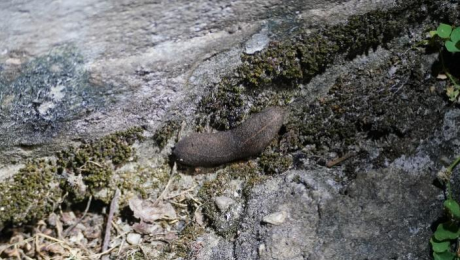
A spider with invincible long legs
As the name suggests, are blind spiders really blind? In fact, not all, some cave blind spiders are indeed blind, and most of the rest actually have eyes, although they are not easy to spot. Unlike spiders, which have eight (or six) eyes, blind spiders have only two eyes and look very cute. Therefore, blind spiders are not spiders, and although the blind spiders and the spiders belong to the same arachnids, their kinship is not close, and studies have shown that blind spiders are even closer to mites and scorpions than spiders. The inner difference between blind spiders and spiders is even greater, blind spiders do not spit out silk webs, and there are no poison glands that can kill prey. Blind spiders are actually harmless pets of humans and animals, so most of them are nocturnal, hiding in the cracks of stones during the day to avoid predators in a low-key manner. And in order to ward off enemies, many blind spiders like to live in groups, which can not only disperse the risk of being eaten, but also let the bad smell secreted by the smelly glands concentrate to drive away the enemy, and the smelly glands are the only active defense means for blind spiders. The blind spider has eight super long legs that are the envy of all animals, but unfortunately they are useless, and in desperation, they have practiced the ability to survive with broken legs. Therefore, it is difficult to see a blind spider with eight legs in the wild, because if the predator is targeted, it will exchange one leg for a life, and the shedding leg will continue to twitch for a few minutes to lure the enemy and give it enough time to escape. The use of long legs for this is really a cruel thing.
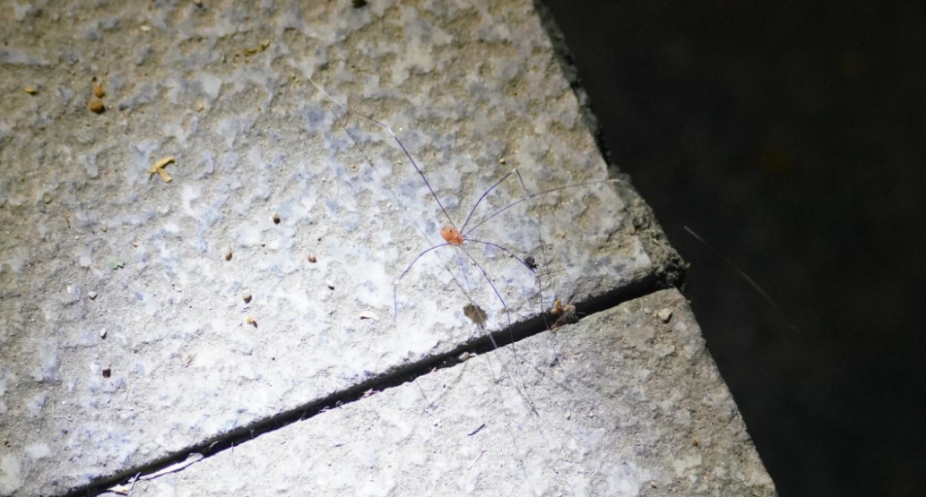
A spider that loves to eat cockroaches
Compared with blind spiders, Heteropoda Venatoria are real spiders. Most people may be afraid of the existence of spiders, but in fact, in the huge family of spiders, there are many members who are good friends of humans, such as Heteropoda venatoria observed this time. Because of its large size, it is also known as a large spider. This spider does not form webs, and likes to hide secretly in dark corners such as stone crevices and beams during the day, so it is not easy to see at ordinary times.
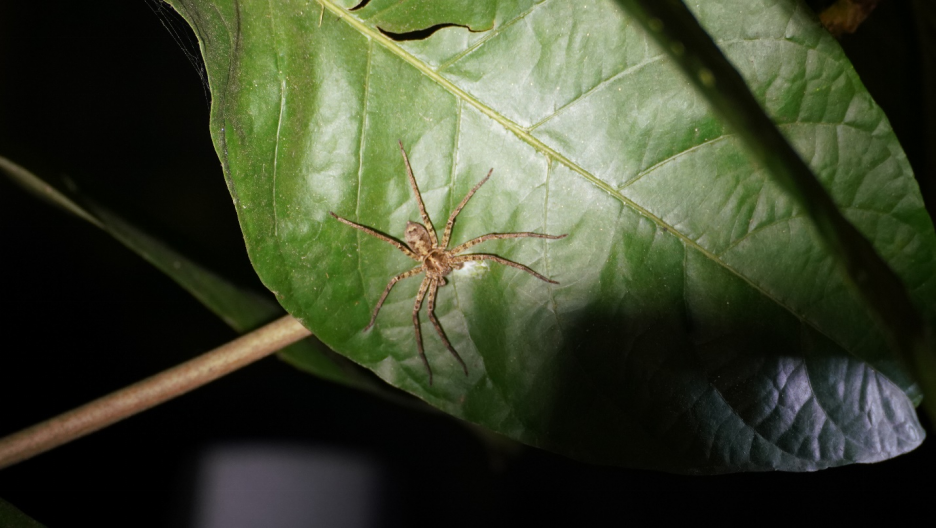
It looks terrifying, but it is actually one of the natural enemies of cockroaches. Cockroaches are a headache and disgusting pest, commonly known as "unbeatable little strong". American biologists once predicted that if a nuclear war broke out in the world, even if all living things died, cockroaches would survive, which shows how tenacious this pest is. Although the cockroach is not afraid of anything, it will still be afraid of Heteropoda venatoria. They are safari-type spiders, which means that wherever cockroaches flee, they can track them and capture them. In addition, Heteropoda venatoria has a good appetite, it can eat several cockroaches in a meal. So where there is, cockroaches dare not run rampant. Once, there were negative legends about Heteropoda venatoria in Taiwan, because of its terrifying appearance. It is said that whenever the urine of Heteropoda venatoria is touched, people's skin will fester. Later, after the investigation and study by biologists, its innocence was restored. You should know that Heteropoda venatoria are not toxic, and it is timid by nature, does not take the initiative to attack humans, and generally hides in the shadows to avoid humans. This is the scourge of ignorance, which almost murdered the good friends of mankind and destroyed the ecological balance.
Singing master katydids
Mecopoda elongata is also called longhorned grasshoppers, which may be relatively unfamiliar to everyone, and it also has a twin brother and sister who also belong to the longhorned grasshoppers family, that is, the well-known "katydids". Along with crickets and oil gourds, it is known as the three major singers in the insect world (cicadas are not selected because their calls are too ugly). The longhorned grasshoppers can rub against each other, making a "bracketed" sound, crisp and loud, pleasant to the ear, plus the appearance is good-looking, since ancient times as a pet for viewing,
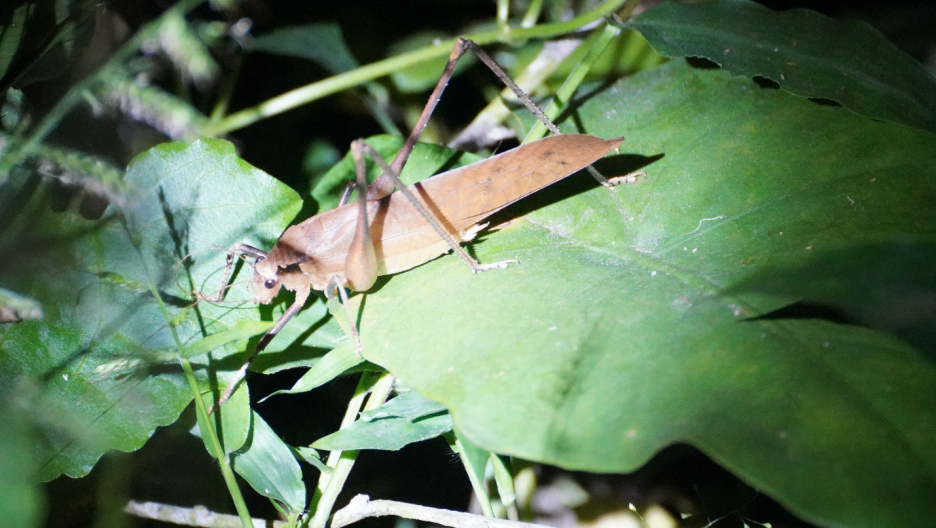
Katydids even become a part of Chinese traditional culture. As early as the end of the primitive society, Dayu opened the precedent of worshipping longhorned grasshoppers. "Yu Pian (Chong Bu)" says that "Yu" is some kind of "insect". "Er Ya (Shi Chong)" makes it clearer that the Yu is specifically referring to the longhorned grasshoppers. Dayu is named after the Yu, and the Yu has even become the totem of the Dayu clan. Therefore, later generations will sacrifice Dayu with the habits of Yu insects. The "Yu Bu" recorded in "Xun Zi" and the "Wu Bu Duo Yu" mentioned in Yangxiong's "Fa Yan" all say that most of the dance steps danced by later generations when they sacrificed Dayu were like the jumping steps of the longhorned grasshoppers. Three thousand years ago, the "Qi Yue", "Cao Chong", "Zhong Si" and so on in the "Shi Jing" are the world's earliest texts to record the longhorned grasshoppers, showing a joyful scene of singing and dancing, and the resulting idiom "Zhong Si Yan Qing" has become an auspicious saying to celebrate the full of descendants. In the Song Dynasty, people began to raise katydids; In the Ming Dynasty, from the folk to the court, it was already the fans of katydids; The Qing Dynasty set off an unprecedented tide of katydids, from Kangxi and Qianlong to the last emperor Xuantong, all loved katydids. Qianlong traveled to the West Mountain and once gave a poem to the katydids. The relationship between Xuantong and the katydids is even more magical, spanning 59 years from the enthronement to the Cultural Revolution. This is China's unique katydid culture, which is still continuing today.
Harmless-looking stinging moth larvae
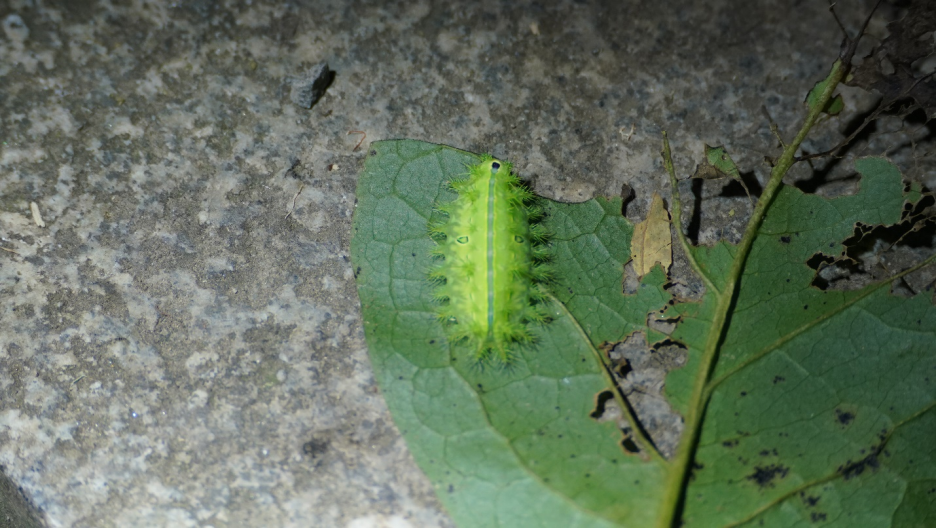
It is the terrifying stinging caterpillar, commonly known as "Yanglazi", whose body has many spikes or stinging tumors, with toxic bristles. Once in contact with the skin, the bristles pierce into the sweat pores, so that the pores are rapidly inflamed, swollen, itchy and unbearable, and accompanied by pain. Allergic people will have a dizzy feeling and even life-threatening, so even birds dare not swallow easily. This kind of caterpillar has eight such spikes, so it is also called "Bajiaola", which is a real ruthless character. It is said that it does not cause damage to skin without sweat pores (such as the palms of the hands), so although this bug is very toxic, it is okay to carefully hold it with your fingers (do not dare to try). This pest mostly grows on some garden trees and fruit trees, and sometimes appears on urban street trees. Once it molts, a large number of poisonous bristles fall on pedestrians with the wind, which will make people itch and cause dermatitis. Therefore, once pricked, use rubber paste repeatedly to pluck out the toxic bristles, and at the same time rub the pain and itching agents.
A snake with a penchant for cleanliness
Many people are afraid of snakes, always thinking that snakes will lurk in the grass and wait for opportunities to attack people. In fact, in the wild, they run away as soon as they see people. Unless you accidentally step on it, or get close to the nest of some large snakes, they generally do not actively attack humans. Moreover, many snakes are non-venomous, so there is no need to worry about being bitten. For example, China's endemic snake species - Opisthotropis andersonii, is a small snake about 30-40 cm long and about a small finger thick. This kind of snake is kind to people (non-venomous), but it is "picky and chosen" to the environment, and only likes a weak alkaline water environment with a PH value of about 7~7.5, which is called an indicator organism of environmental superiority and inferiority. Due to their scarcity and small distribution, it is worthwhile to see the real face. Of course, it also shows that the natural environment of Huolu Mountain is well maintained.
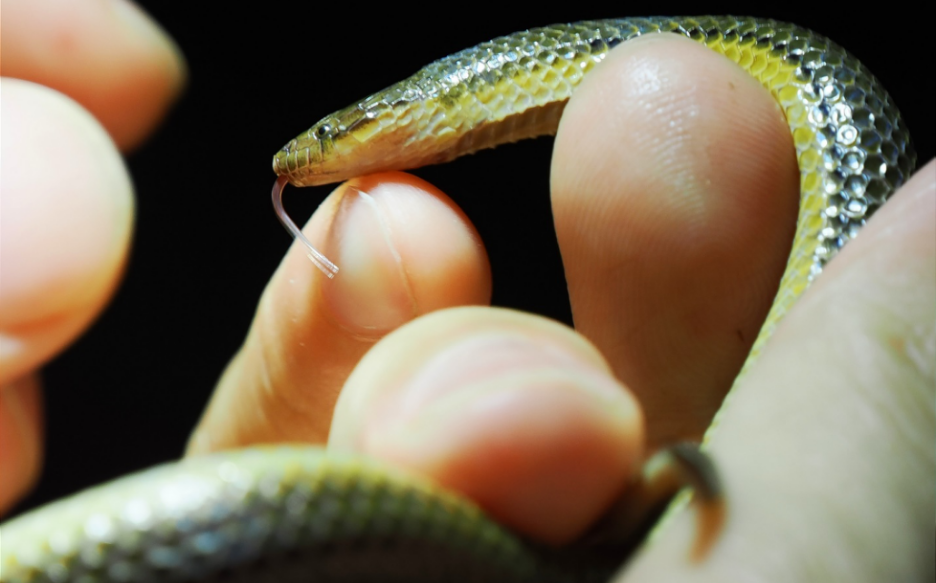
The interesting observation all the way made us unconsciously come to the top of the mountain. Overlooking the lights of Guangzhou at night, who would have thought that this place is only a few feet away from the city, but it seems to be two completely different worlds. The brilliant neon lights emitted by the Xiaomanyao tower are like guiding lights, announcing the tenacious and indomitable spirit of human resistance under the ravages of the epidemic. The small animals in the night are also struggling with various difficulties in the living environment at this moment, struggling to survive at the cost of their lives. They are not fundamentally different from us, they are all outstanding products of nature and the masters of the earth. Perhaps it is long overdue for us to let go of human arrogance and learn to respect nature and cherish lives.

Writer & Photographer: Laetitia Liu
Typesetterr: Louis Hu



 International Department, The Affiliated High School of SCNU
International Department, The Affiliated High School of SCNU





